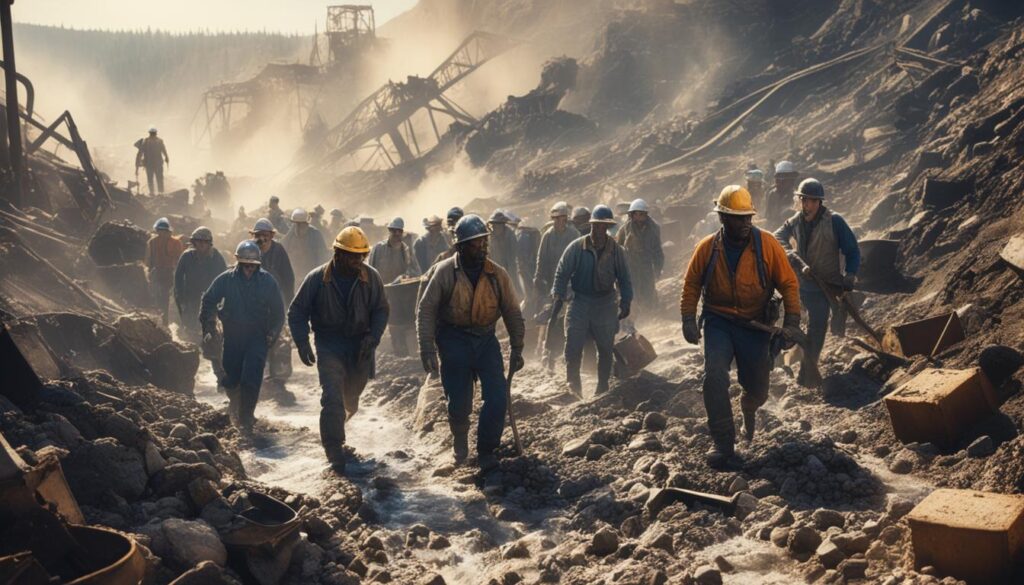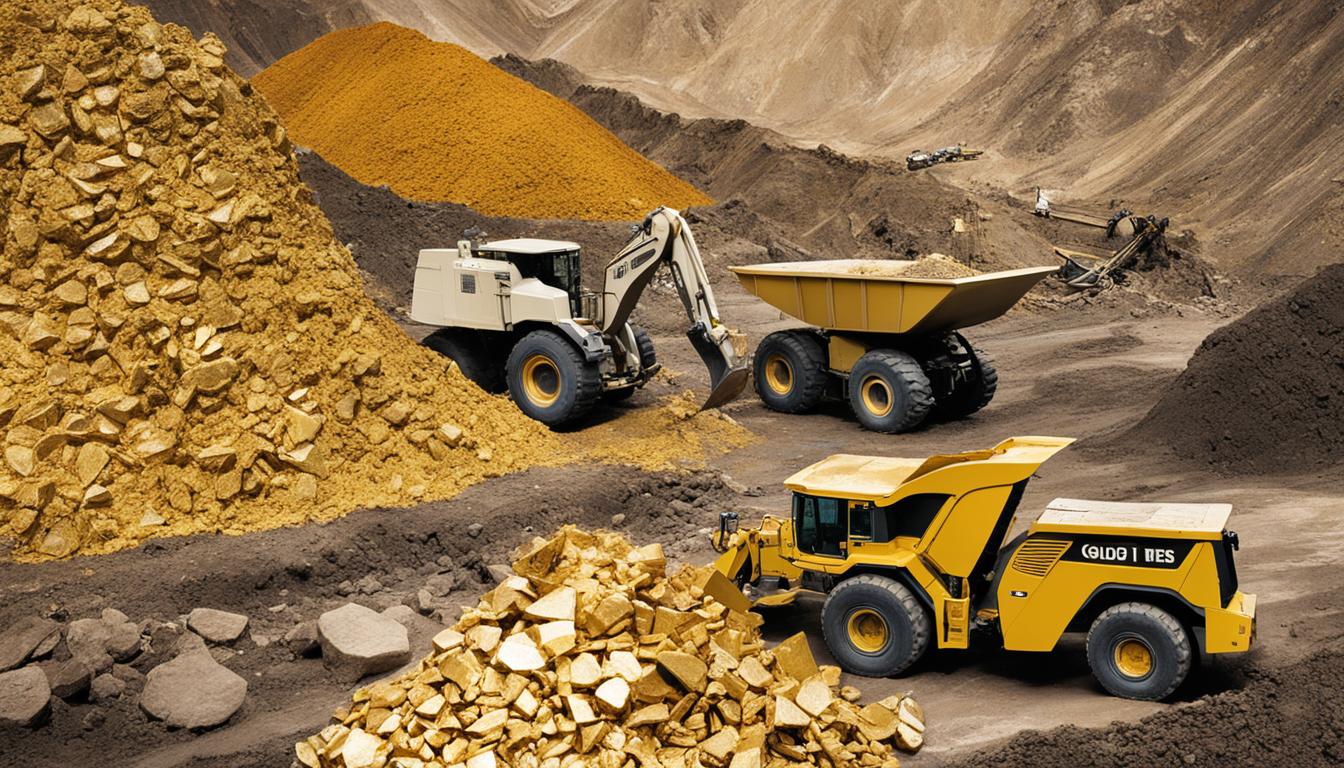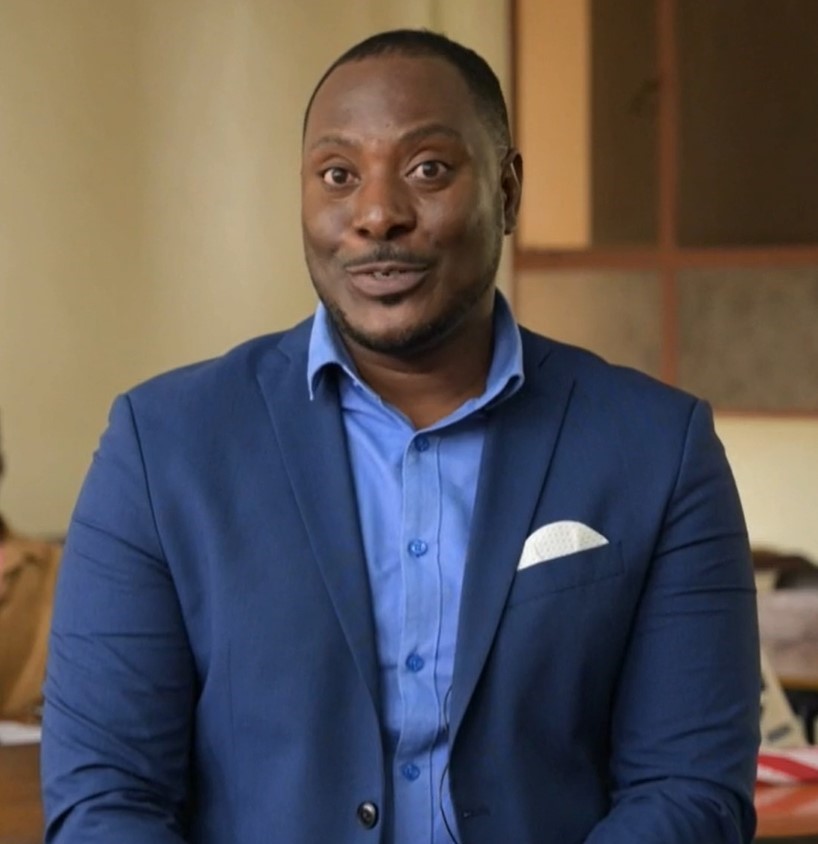The world is facing a big climate crisis, and a surprising link has been found between global warming and gold1. Over the past 15 years, the climate crisis has made natural disasters more common and severe1. Gold mining, which uses a lot of energy, is feeling the effects of these disasters. This article looks at how the gold industry and the environment are connected in ways we might not expect.
Key Takeaways
- Gold mining is a big source of greenhouse gases, making its carbon footprint a big worry.
- Climate change is a threat to gold mining, affecting supply chains and the availability of water and other key resources.
- The gold industry is trying to lessen its environmental impact with efforts like the World Gold Council’s Responsible Gold Mining Principles.
- Artisanal and small-scale gold mining, a big source of income for many, has special challenges in dealing with climate change and reducing its environmental harm.
- Gold mining’s vulnerability to climate change affects global economic stability and the safety of gold supplies.
The Role of the World Gold Council
The World Gold Council has been a key player in the gold industry for over 35 years2. It connects gold production with gold markets. This has helped grow demand and investment in gold in places like China and India2. The Council also promotes sustainable gold practices to address environmental and climate issues in the gold sector.
Bridging the Gap Between Gold Production and Markets
The World Gold Council has been crucial in linking gold producers and consumers2. It offers market insights, research, and educational tools. This helps close the information gap between the supply and demand sides, making transactions smoother and more transparent.
Opening Up New Gold Markets Globally
The Council has been successful in expanding gold markets worldwide2. It works with governments, banks, and financial institutions. This has made gold more accessible and appealing as an investment in emerging markets, boosting the global gold market2.
| Year | World Gold Council Report |
|---|---|
| 2018 | “Gold and Climate change: An Introduction” |
| 2019 | “Gold and Climate Change: Current and Future Impacts” |
| 2020 | “Gold and Climate Change: The Energy Transition” |
| 2021 | “Gold and Climate Change: Decarbonising Investment Portfolios” |
| 2022 | “Gold and Climate Change: Adaptation and Resilience” |
The World Gold Council also promotes sustainable gold practices2. Its reports on climate change and the gold industry have pushed for a greener future2. The Council engages with stakeholders to make the gold industry resilient and adaptable to climate change2.
“The World Gold Council’s research and initiatives have been pivotal in shaping the gold industry’s response to the challenges of climate change. Their reports and engagements have provided valuable insights and actionable steps for the sector to reduce its environmental impact and build a more sustainable future.”
The World Gold Council’s work has been key in developing the gold industry2. It has helped bridge the gap between production and markets, expand markets globally, and promote sustainability. The Council’s efforts address climate-related risks and opportunities, supporting the long-term growth of the global gold market2.
Central Banks and Sustainable Gold Policies
Central banks buy a lot of gold to protect against risks3. The World Gold Council helps them use gold in a sustainable way. They support formal and responsible gold mining. This looks at how central banks can help make gold production and sourcing better.
Central banks are now focusing on climate change3. The Federal Reserve in the U.S. is taking steps, but not as much as others3. They see climate risks as threats to financial stability, like heat waves and hurricanes3. These risks could lead to big economic problems, making wealth inequality worse and displacing people3.
Dealing with climate change is new for all central banks4. Moving to low-carbon economies will need $4–6 trillion a year4. By 2022, the NGFS had 127 members from 85 countries4. The Climate and Financial Risk Center for Latin America and the Caribbean is working on discussing climate risks4.
Many organizations, including some central banks, follow the UN’s Principles of Responsible Investment5. The European Central Bank plans to report on climate risks by early 20235. The Bank of Finland wants its investments to be carbon neutral by 2050, except for gold5. It plans to cut emissions from stocks by 50% by 20255.
Central banks are tackling climate change and promoting sustainable gold practices. Their actions can lead to a better gold industry. By supporting sustainable gold, they help make the global gold market more responsible.
Responsible Gold Mining Principles
The World Gold Council has created a set of rules called the Responsible Gold Mining Principles (RGMPs). These rules help guide the gold mining industry in being responsible6. They focus on environmental, social, and governance (ESG) factors, setting a standard for everyone6.
Defining Responsible Mining Practices
Before the RGMPs, there was no single set of rules for responsible gold mining6. Now, companies that follow these rules must share how they do it and get checked by an outside group6. All World Gold Council members, which make most of the world’s gold, must follow these rules6.
Mandatory Compliance and Independent Verification
Companies must share how they’re doing every year and get checked by an outside group7. This check looks at both the company and its sites. It checks if the company’s policies are followed and if they work well7. The goal is to show others that these rules are as good as other standards, making it easier to check how well they’re followed7.
Eldorado Gold, a Canadian gold mining company, follows the RGMPs at its mines8. They shared their first report in 2020, showing they met the Year 1 goals at the corporate and mine levels8. In 2021, they checked themselves at each mine to meet Year 2 goals and fully follow the RGMPs8.
“The Responsible Gold Mining Principles are driving positive change in the industry by setting a clear and comprehensive framework for responsible practices.”
The RGMPs and the process of checking them are key to making gold mining responsible and sustainable6. This helps meet what consumers, investors, and others expect from the industry6. It’s important for the industry’s future and for the communities and environments affected by mining6.
global warming and gold
Global warming and gold production have a complex relationship. Artisanal and small-scale gold mining (ASGM) is a big part of the world’s gold supply. But, it also has a big impact on the climate because it uses a lot of energy and releases mercury9.
The Climate Footprint of Artisanal Gold Mining
The gold mining industry is a big source of CO2 emissions, over 100 million tonnes a year, says the World Gold Council10. This is mainly because ASGM is very energy-intensive. Also, using mercury in these mines adds to the climate problem by releasing a toxic substance into the environment10.
Reducing Mercury Usage in Artisanal Mining
There are efforts to lessen the environmental harm from ASGM by cutting down on mercury use. Using simple devices called retorts can capture up to 95% of the mercury used in gold extraction. This helps reduce the release of this harmful substance into the air and water9.
But, solving the problems in ASGM is still a big challenge. We need a full plan that includes new technology, policy changes, and working with local communities. This is the only way to really tackle the climate impact of artisanal gold mining9.

“There is a potential for gold mining to reach net-zero emissions by 2050, making the sector a key player in decarbonization efforts.”9
| Country | Gold Production | Emissions Contribution |
|---|---|---|
| Nevada, USA | 4.5 million ounces (75% of US total) | – |
| Australia | – | 5.9 million tonnes CO2-eq (5.9% of total) |
| Canada | – | 3.7% of global emissions |
| Global | – | 100+ million tonnes CO2-eq annually |
Mining’s Vulnerability to Climate Change
The mining industry, including gold mining, faces big challenges from climate change. Extreme weather events disrupt mining and increase supply chain risks and energy costs. This makes the industry very vulnerable to climate change’s effects1112.
Direct and Indirect Impacts on Mining Operations
The mining industry produces over 3,000 tonnes of gold every year. It is a big source of greenhouse gas emissions11. Gold mines use a lot of water, making them vulnerable to droughts and water issues11. Rising temperatures can also make mining dangerous for workers and affect equipment11.
Increased rainfall can cause landslides in mines in risky areas11. Extreme weather events like storms and fires can disrupt the energy supply for gold mines11.
Emerging economies that depend on gold for growth are especially at risk from climate change12. These countries often rely on the mining sector and could face more challenges from climate change. This highlights the need for strong measures to make global supply chains climate-resilient12.
Adapting to climate change is key for the mining industry. Improving water management, enhancing worker safety, and finding new energy sources are important steps. These actions will help the industry keep up its operations and support the global economy1112.
Mining and Economic Development
The extractives sector, including gold mining, is key to economic growth in many countries, especially in the Global South13. Since 2010, global gold mining has grown by 26%13. In Africa, this growth has been even more impressive, with a 60% increase13. In fact, gold production has doubled in at least 10 African countries13. In Ghana, gold makes up about a quarter of its total exports each year13.
The Resource Curse and Livelihood Disruptions
The link between mining and development is complex. The “resource curse” suggests that countries rich in natural resources may grow more slowly and have higher poverty rates14. Mining can harm the environment and local communities by creating waste and threatening their way of life.
Climate change adds to the challenges, making communities more vulnerable and highlighting the need for climate-smart mining13. The gold mining process has a big carbon footprint13. Using low-carbon power can help meet climate goals13. Gold mining companies can support renewable energy in host countries, reducing their climate impact13.

The goal is to use mining for economic growth while reducing its environmental and social risks, especially with climate change. Making mining sustainable is key to benefiting local communities and ecosystems1314.
Supply Chain Risks and Security of Supply
The mining industry faces many risks from climate change, like disruptions, changes in resources, and price swings15. These issues can lead to big problems, affecting societies, economies, and politics, especially for countries that rely a lot on mining15. To keep supply chains strong, we need to make sure our plans for critical minerals are ready for climate change.
More companies are now focusing on making their supply chains sustainable. This is because of laws and more customers wanting sustainable products15. Over 85,000 businesses use tools like Sedex to make their supply chains better and more open15. Laws in the UK, California, and the EU are pushing companies to look at social and environmental risks in their supply chains15.
There’s a growing need for critical minerals as we move towards renewable energy. Since 2010, the amount of minerals needed for new power units has jumped by 50%16. By 2050, we’ll need about 3 billion tons of these minerals to clean up the global energy system16. Now, countries like the USA, EU, and others are trying to lessen their reliance on China for these minerals16.
| Key Risks and Strategies for Mining Supply Chain Resilience |
|---|
|
To tackle these issues and keep supply chains safe, we need a strong plan. This means making supply chains more visible, finding new sources, building stockpiles, and working together1516. By facing supply chain risks head-on and making critical mineral supply chains stronger, the mining industry can handle climate change and global shifts better.
“The future of the global economy depends on the resilience and security of critical mineral supply chains. Safeguarding these supply chains is essential for the sustainable development of our societies.”
Conclusion
The link between the gold industry and global climate change is complex. It calls for a joint effort from the industry and policymakers. Together, they must work to lessen the gold sector’s carbon footprint and prepare for climate challenges17.
Gold’s use in various products doesn’t greatly increase emissions. Yet, mining gold is energy-intensive and adds to greenhouse gases17. The gold industry is now focusing on better mining methods. This is shown by the World Gold Council’s Responsible Gold Mining Principles18. These principles set high standards for the industry to improve its sustainability18.
The gold industry must adapt to the urgent need for cutting emissions and adapting to climate change. It can do this by supporting sustainable finance, recycling, and working with policymakers on regulations1719. With a focus on innovation, transparency, and working together, the gold industry can lead in creating a sustainable future19.
FAQ
What is the relationship between global warming and the gold industry?
What is the role of the World Gold Council in the gold industry?
How are central banks involved in sustainable gold policies?
What are the Responsible Gold Mining Principles?
What are the climate impacts of artisanal and small-scale gold mining?
How is the mining industry vulnerable to climate change?
What is the relationship between mining and economic development?
How are supply chain risks and security of supply affected by climate change?
Source Links
- The 7 human activities that cause climate change
- Gold and Climate Change
- CHAPTER 4: The role of central banks in supporting green structural transformation in the least developed countries
- Sustainability is catching on in central banks – Debt Management Annual Review 2021
- Responsible Gold Mining
- World Gold Council’s Responsible Gold Mining Principles (RGMPs)
- Eldorado Gold 2021 Responsible Gold Mining Principles Report
- Gold’s Potential as a Safe Haven in a Warming World | OilPrice.com
- Assessing the environmental impact of gold production from double refractory ore in a large-scale facility
- How climate change affects gold mining – 11Onze
- Gold mining, climate change, and Africa’s transition | Brookings
- Environmental Impacts of Gold Mining – Earthworks
- Sustainable supply chain: what is it and why is it important?
- The security of critical mineral supply chains – Mineral Economics
- Gold and climate change: Current and future impacts
- Is gold mining part of the solution to climate change? | Brookings
- Gold mining is one of the world’s most destructive and unnecessary industries – here’s how to end it

